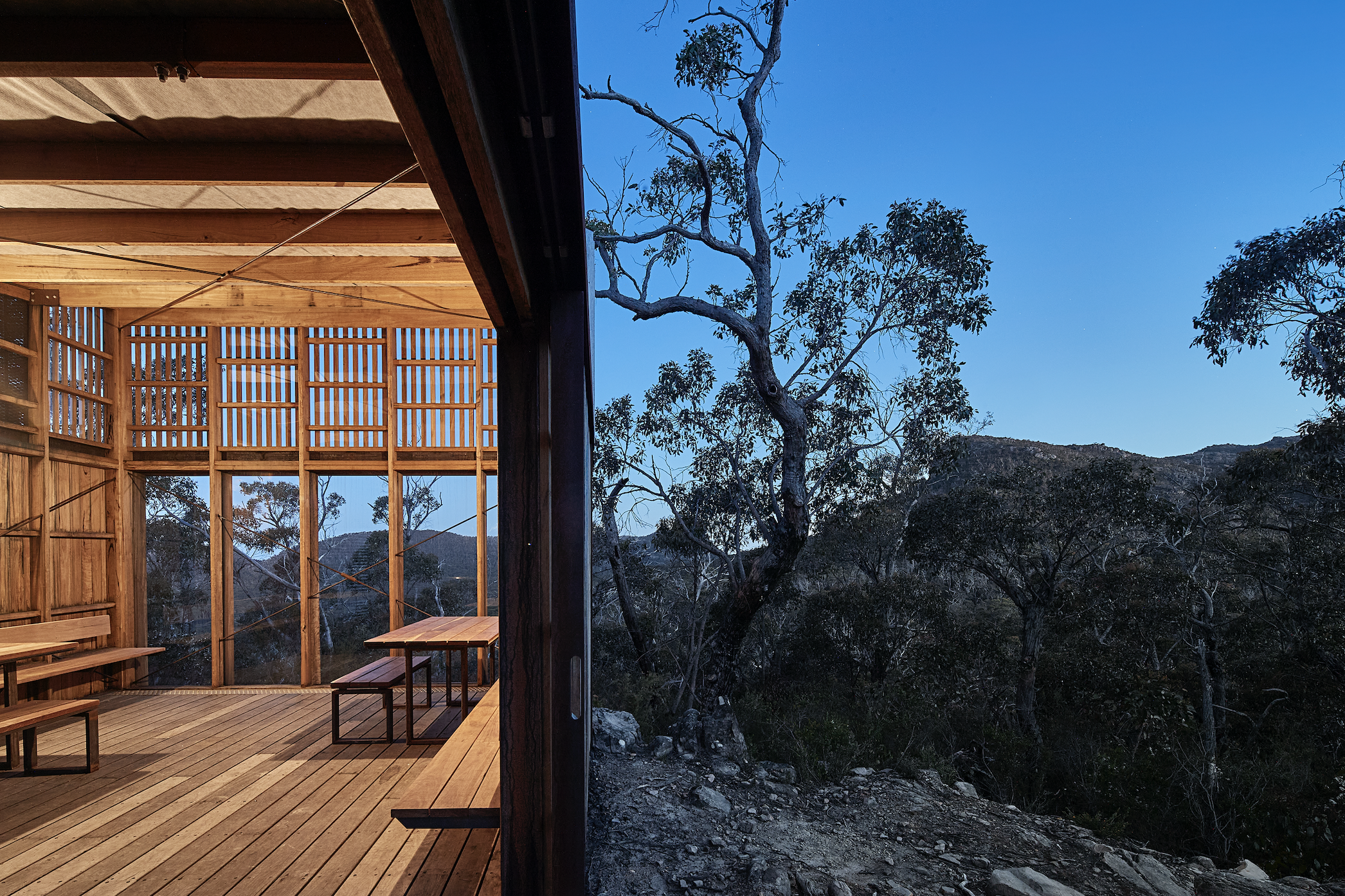Grampians Peaks Trail offers new heights for Australian ecotourism
The rugged landscape of the Grampians Peaks Trail in Western Victoria offers not only a world class hiking experience but also important environmental protection for the pristine Gariwerd wilderness.
The trail traverses the lands of three traditional owners - Barengi Gadjin Land Council, Eastern Maar Aboriginal Corporation and Gunditj Mirring Traditional Owners Aboriginal Corporation and includes three regional council jurisdictions.
Landscape is the centrepiece of Barigar. Image by SHANNON MCGRATH PHOTOGRAPHY
Multidisciplinary design firm McGregor Coxall were responsible for landscape architecture, setting design palettes and site layouts, working closely with Noxon Giffen (Architects) and OPS Engineers (Structural Engineers) in a highly-collaborative operation spanning 3.5 years.
Fundamental to Parks Victoria brief were three key elements; celebration of Gariwerd (Grampians) with landscape as hero, recognition of the scale and diversity of the terrain with site responsive designs, and adoption of design strategies for construction and maintenance in response to the remote nature of the 160km trail.
Tent pads at Mud-djadjug (Mt Abrupt). Image by SHANNON MCGRATH PHOTOGRAPHY
The trail is bound by a series of breathtaking views and memorable experiences. The walk will conserve, protect and celebrate the unique beauty of Gariwerd (Grampians), achieving the highest possible grade of environmental sensitivity through the protection of site-specific conditions such as biotope preservation, overland flow management and microclimate.
A major drawcard takes the form of 11 new minimalistic campsites, featuring amenities restricted to essentials of tent platforms, communal areas, shelters, and toilets to amplify the hiker experience with an appropriate level of comfort.
McGregor Coxall’s landscape approach ensures that campsites “touch the ground lightly”, minimising impact on the environment and maintaining Gariwerd’s iconic, biodiverse landscape as the hero, said McGregor Coxall’s Project Director and Melbourne Co-Studio Leader, Nick Griffin.
Seated viewpoints at Werdug (Lake Wartook). Image by SHANNON MCGRATH PHOTOGRAPHY
“A family of architecture, designed in close collaboration with Noxon Giffen, responds to sites’ unique geological conditions and character and are tailored for harmony with site lines, sun exposure, wind, and ecological communities,” said Griffin. “A common thread is established through all sites, incorporating site-specific responses that curate the various contexts, stories, and conditions of each of the locations.
“Architecture offers protection from the elements without completely inhibiting the senses of nature. Off-grid campsites are designed with mindfulness to guidelines and tracks – intuitive circulation allows for more sustainable campsites that minimise public access to dense vegetation. Site greywater is treated to the highest possible standards through natural passive systems.”
Branches of organic cladding mimic the sequence of vegetation, charred timber offers a dark silhouette amongst burnt out trees from historical bushfires, silvered timber shelters extend from rocky outcrops, and oxidised mild steel shares unique tonal reds of oxidised sandstone, says Noxon Giffen’s Design Director, Justin Noxon. The structures will be engulfed by vegetation and gain the patina of the site as they age and weather over time.
Communal shelter at Stony Creek Group Camp. Image by SHANNON MCGRATH PHOTOGRAPHY
It’s estimated the trail will bring an important economic and tourism development opportunity for the local community, the region and Victoria as a key nature-based tourism destination and will be one of the great iconic walks of Australia.
The project aims to increase the total number of walkers using the Grampians Peaks Trail from 13,800 in 2015 to over 34,000 walkers by 2025 and which will generate more than $6 million of economic benefit for the region and Victoria.



